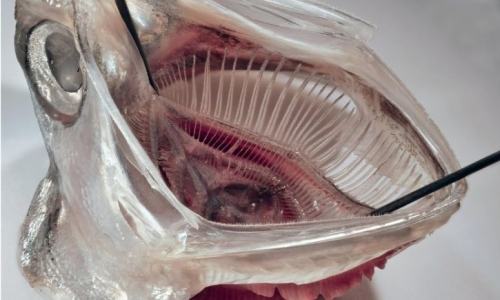


 10:42:51
10:42:51  2024-02-25
2024-02-25  1247
1247

Treating pain in the brain isn't easy – what with it being essential for everything we think and do – but a newly developed, non-invasive method of using ultrasound is showing particular promise, as outlined in a published study.
Researchers from the Virginia Tech Carilion School of Medicine used tightly focused beams of ultrasound, aimed at one particular part of the brain, to reduce the perception of pain and some of its related effects (such as heart rate changes).
While this approach is still in the early stages, the team is hopeful that it can be developed further as a way of manipulating the brain and soothing our bodies, especially for those experiencing chronic pain.
"This is a proof-of-principle study," says neuroscientist Wynn Legon from the Virginia Tech Carilion School of Medicine.
"Can we get the focused ultrasound energy to that part of the brain and does it do anything? Does it change the body's reaction to a painful stimulus to reduce your perception of pain?"
The part of the brain that these ultrasound waves take aim at is the insula, which is known to be involved in handling the sensation of pain – making it a prime target for treatments that seek to manage pain.
The insula is buried deep in the brain though, which is where ultrasound comes in. These narrow bands of sound waves can be precisely targeted and adjusted – and plenty of previous research has looked at their potential to impact the brain. This is the first time that it's been tried on the insula.
With the help of 23 healthy human volunteers giving feedback on mild sensations of pain, the researchers showed that targeting the insula did have an effect on the painful feelings.
Rather than just masking the pain though, it seemed to benefit the body in other ways, including increasing heart rate variability – a measure of the variation in time between each heartbeat – which has been linked to pain sensitivity.
"Your heart is not a metronome," says Legon. "The time between your heart beats is irregular, and that's a good thing. Increasing the body's ability to deal with and respond to pain may be an important means of reducing disease burden."
Future research could look at the way the heart and the brain interact with each other when a person is experiencing pain – it might even be possible to treat pain by targeting the cardiovascular responses to it, the researchers say.
As for ultrasound treatments, although the pain relief reported in the study wasn't huge, it was substantial enough to indicate the potential of the approach as a non-invasive, safe, easily controlled method for easing suffering.
"It could make a significant difference in quality of life, or being able to manage chronic pain with over-the-counter medicines instead of prescription opioids," says Legon.
Reality Of Islam |
|

A new study

Researchers

A new chip-

A large inf
 9:3:43
9:3:43
 2018-11-05
2018-11-05
10 benefits of Marriage in Islam
 7:5:22
7:5:22
 2019-04-08
2019-04-08
benefits of reciting surat yunus, hud &
 9:45:7
9:45:7
 2018-12-24
2018-12-24
advantages & disadvantages of divorce
 11:35:12
11:35:12
 2018-06-10
2018-06-10
 6:0:51
6:0:51
 2018-10-16
2018-10-16
 8:15:37
8:15:37
 2023-02-16
2023-02-16
the happy life of mankind requirement
 6:36:36
6:36:36
 2022-01-25
2022-01-25
 11:11:59
11:11:59
 2023-02-01
2023-02-01
 5:58:12
5:58:12
 2021-12-18
2021-12-18
 9:42:16
9:42:16
 2022-10-19
2022-10-19
 7:45:39
7:45:39
 2018-06-21
2018-06-21
 3:42:22
3:42:22
 2021-12-24
2021-12-24
 5:41:46
5:41:46
 2023-03-18
2023-03-18
| LATEST |